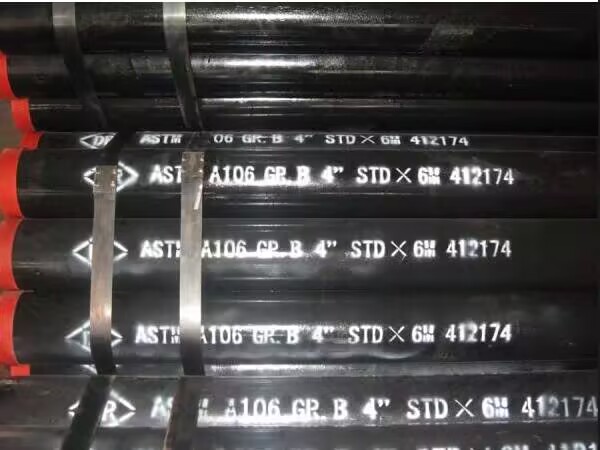Comparison of common steel pipes: ASTM A106 VS ASTM A53
A106 and A53 are the most commonly used
carbon steel pipe types in industry today, and they are very similar. However, there are some differences in material, production process, application and so on. Although the gap between them is very small, they are irreplaceable in certain aspects.

Manufacturing process:
In terms of manufacturing process, the manufacturing process of A106 and A53 is very similar, the most important difference is that the pipe that meets the A106 standard must be seamless, and the pipe that meets the A53 standard can be seamless or welded.
Welded pipes are made by rolling a steel sheet or coil into a cylinder shape and then joining the edges of the steel sheet or coil by welding. Seamless pipe is made by passing a cylindrical billet through the middle while it is hot, the shape is the same as welded pipe, but it has no seam.
Chemical composition:
In addition to the slightly different manufacturing processes for the steel pipes made by A106 and A53, the two standards are also slightly different in terms of chemical composition. In addition to the different content of the individual elements, the most noteworthy is that the A106 pipe contains silicon, while the A53 pipe does not contain silicon. Silicon as an alloying element improves the heat resistance of the A106 pipe, making it suitable for high temperature service.
The A106 and A53 standards also contain different amounts of sulfur and phosphorus depending on their grade. These elements are usually treated as impurities in steel, so their content in steel pipes is very small. However, these trace elements increase the machinability of the steel pipe.
Application field:
A106: Preferably used in high temperature and high pressure environments, especially where seamless steel pipes are required. It is mainly used for high temperature and high pressure pipelines, such as boilers, refineries, fossil devices and other places with high temperature and pressure requirements.
A53: Suitable for some general pressure or low pressure places, suitable for pipeline fluids and structural support. Suitable for water, gas, steam and some low pressure fluid transport. It is also commonly used in the field of building structures.
In summary:
A106 and A53 are the most commonly used steel pipe types in industry today. Because of its differences in manufacturing processes and chemical composition, there are many different applications, and it is indispensable in daily life and industrial manufacturing.
Read more: ASTM A106 Gr.B seamless steel pipe or ASTM A53 GR B seamless carbon steel pipe
